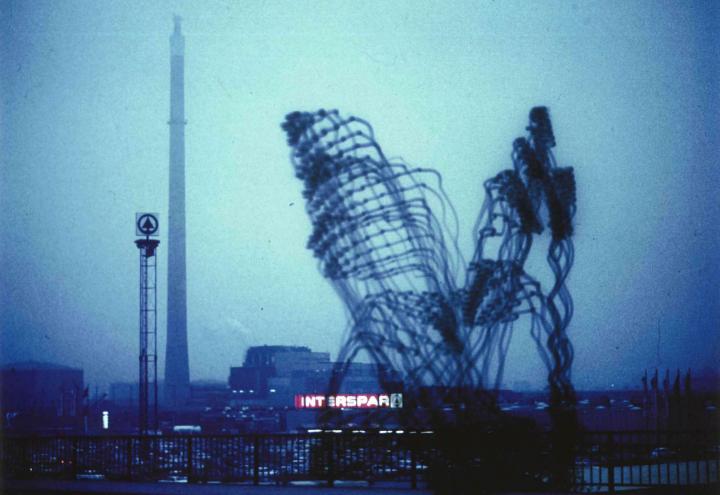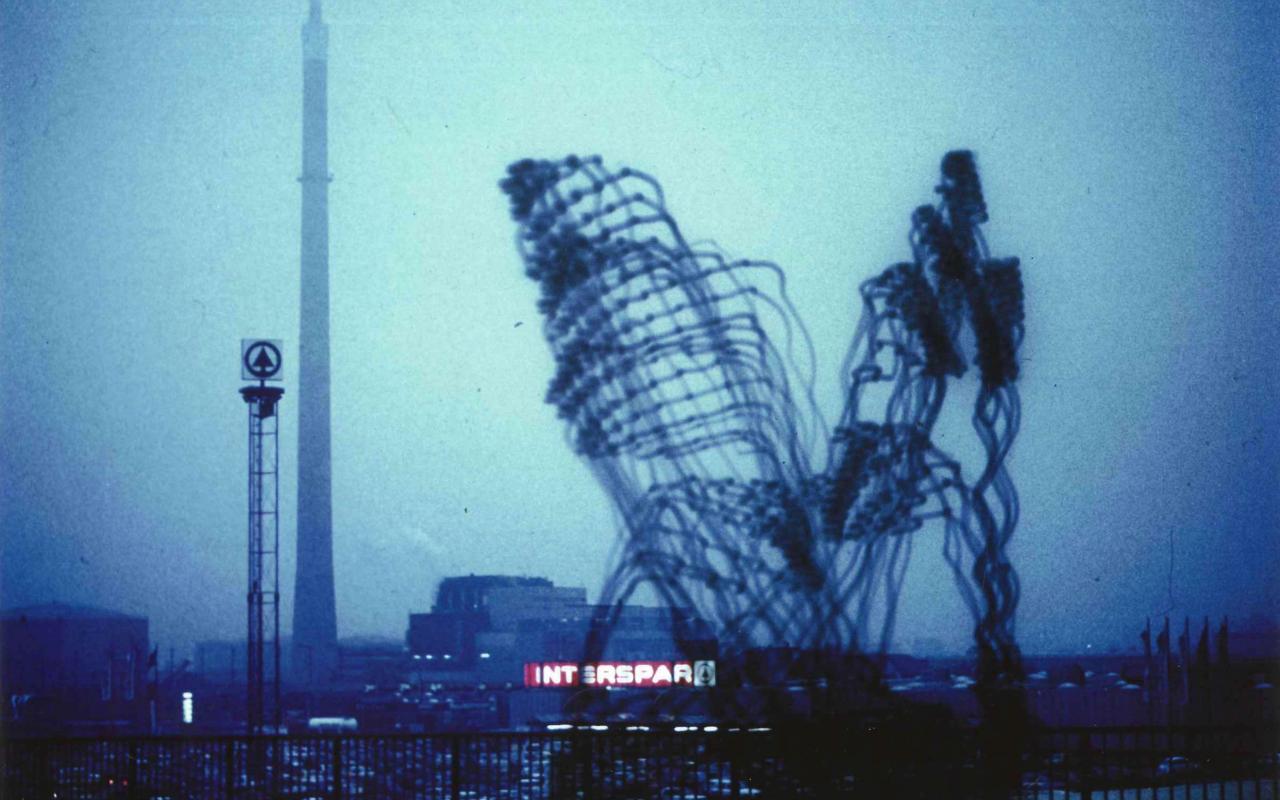Otto Beckmann
Imaginäre Architekturen

- Artists
- Otto Beckmann
- Title
- Imaginäre Architekturen
- Year
- 1968–1977
- Medium / Material / Technic
- Color photographs
-
When Otto Beckmann, a pioneer in electronic computer graphics, sought out experts from various technical disciplines in the 1960s to explore the potential of computer-generated images, he was the only artist pursuing this interest. Together with engineers Alfred Graßl and Gerd Koepf, his son Oskar Beckmann, and cameraman Gerhard Schedl, he founded the experimental group ars intermedia in 1966.
From 1970 onwards, Beckmann worked with his custom-built »Ateliercomputer a.i.70/73«, a computer designed for artistic purposes. Beckmann could combine its individual functions and tweak the image generation process in real time using rotary knobs. This enabled image creation in a traditional sense using a computer. The results could be saved on magnetic tapes and reproduced by photographing or filming the screen.
The series »Imaginäre Architekturen« (imaginary architectures) holds a key role in Beckmann’s oeuvre. It showcases the aesthetical and technical development from 2D graphics to 3D hybrid photography. The goal was not to design architectures that could be put into practice. By inserting his imaginary buildings into photographs of desolate post-war cityscapes, Beckmann imbued his work with a critical impetus. Beckmann’s reflection of reality also finds expression in a dystopian vision towards the end of the 1970s: Prompted by global warming, he reimagined Linz and Vienna as coastal cities.
